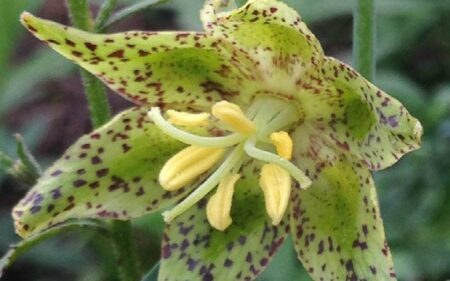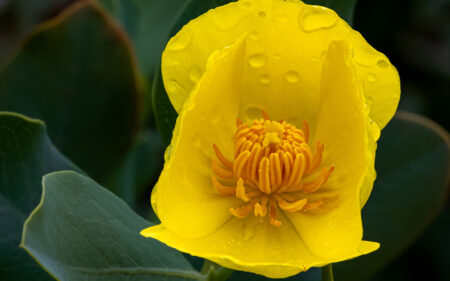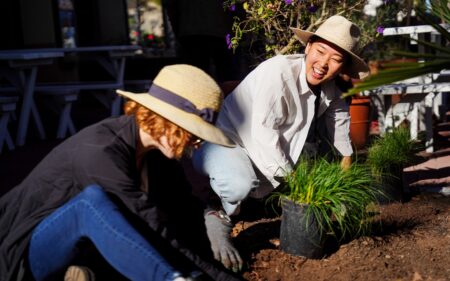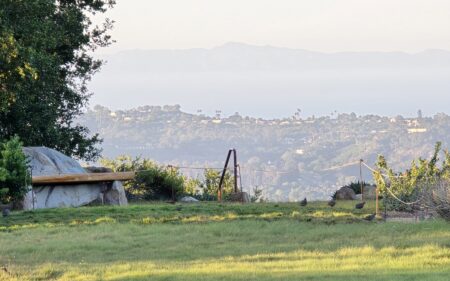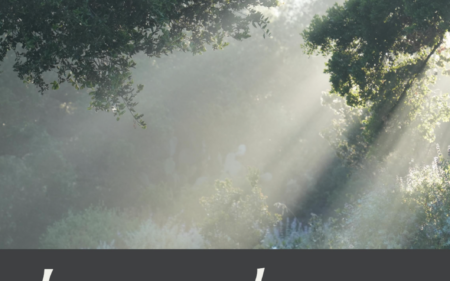Wings and Wildflowers: New Art Exhibit is an Homage to Habitat
This spring, Santa Barbara Botanic Garden proudly presents “Arriving Home,” a new exhibition of prints and paper cut collages by multidisciplinary environmental artist, Justina Freel. Through her unique artistic expressions, Freel invites us on a journey into the intimate lives of birds, connecting us with the native habitats that are essential for their survival—and ours.
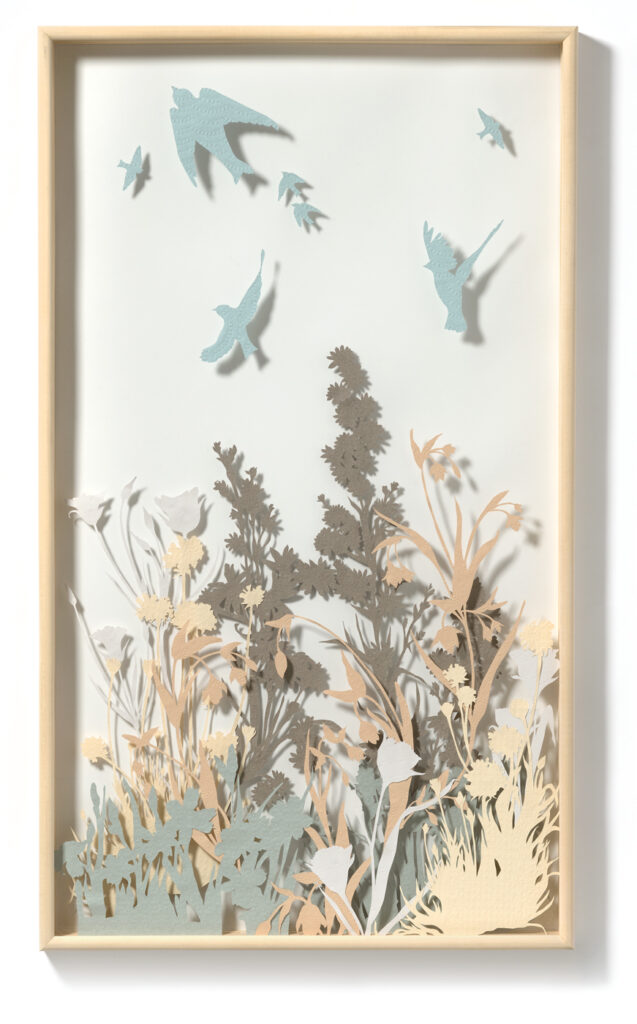
A Distinctive Artistic Approach
Each piece in “Arriving Home” features a specific bird and some of the native plants they rely on, like cedar waxwings feeding on toyon berries or a family of quail scavenging among poppies. On their own, they highlight a few strands in the web of life but taken together, they speak to a vast, complex biodiversity. “Each scene is a physical progression through interconnected habitats, from coastal prairies to mountain forests,” Freel explains. The details in ‘Arriving Home’ brings out the complex world of biodiversity, making it clear that everything has its place in nature’s big picture.
At the heart of “Arriving Home” are Freel’s distinctive multilayered paper silhouettes. She begins by embossing the paper to infuse it with textured patterns. Then, with precision, she hand-cuts and layers these papers into the intricate forms of native plants and birds. The resulting artworks might be easily recognized as birds and plants from afar, yet it’s the closeness that reveals the magic: the embossing creates subtle shadows and textures, not immediately apparent, which breathe life into each piece. This meticulous detail invites viewers to lean in, drawing them into a world where every silhouette seems to flutter or sway with the unseen currents of the air.
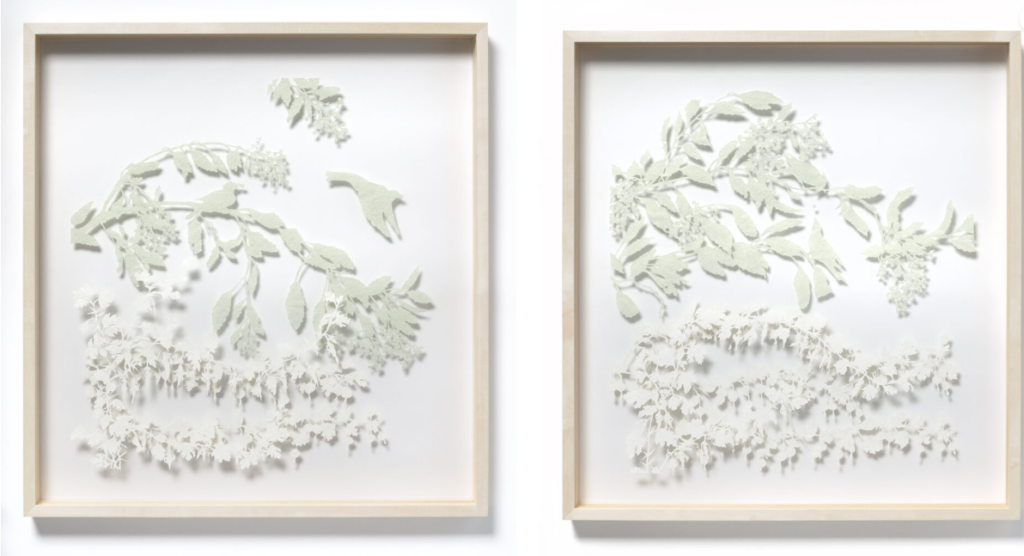
In her relief press prints, Freel hand grinds minerals into her pigments to create an otherworldly shimmer and glow. “The seasonal changes of light interact with my art to cast gradations of subtle textured silhouettes,” she states, “evoking the rhythms of life and engaging viewers in a deeply intimate relationship with nature.”
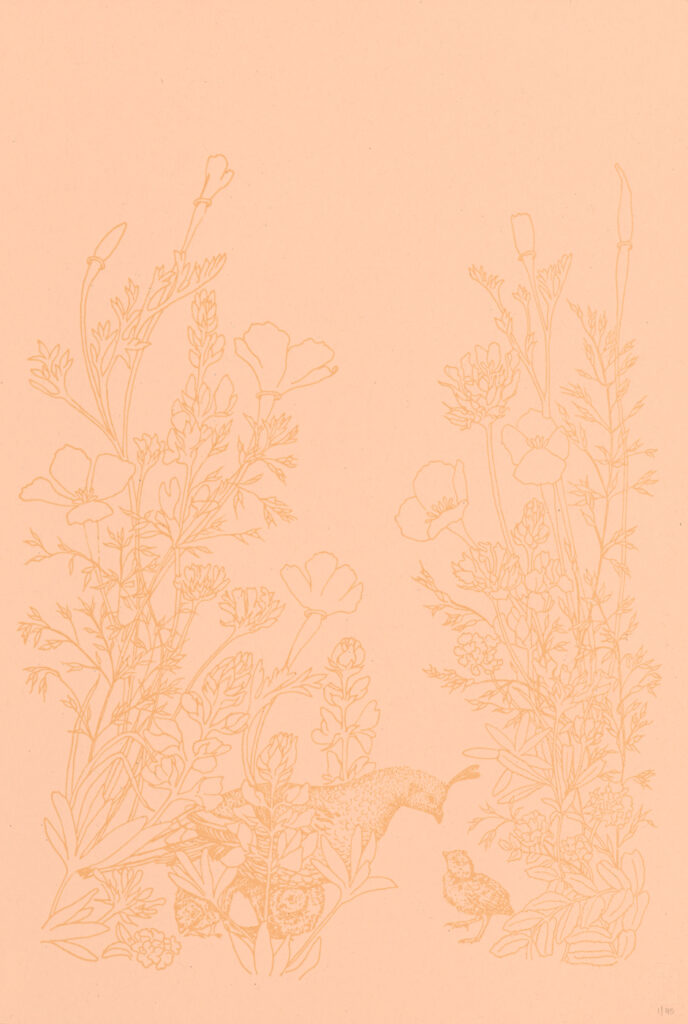
Just as every plant and animal plays a role in the ecosystem, every detail in her art invites the viewer to look closer, to discover the subtle, yet vital, connections that sustain life. Through this meticulous attention to detail, Freel not only celebrates the beauty of native species but also underscores the importance of preserving their environments.
This choice of media not only captures the essence of the subjects but also reflects Freel’s commitment to environmental stewardship. “My practice is consciously committed to using natural materials and processes,” highlighting the importance of non-toxic, compostable materials in her work.
Inspiring Action and Connection
“What draws me to native plants as a central theme in my work,” Freel shares, “is the vivid tableau of bird songs, the play of quail in the meadows, and the soothing scents of sage. These experiences, deeply rooted in my childhood memories in the hills of the Hahamongna River, underline the uniqueness of these plants and the dire need for environmental conservation to protect such rare biodiversity.”
With “Arriving Home,” Justina Freel hopes to influence viewers’ perceptions of their local environments, encouraging them to “welcome native plants into their home gardens” and appreciate the “diversity of color and life that native habitats support.” She dreams of creating spaces where viewers are surrounded by “lush, unpruned scenes of native environments,” helping them see the beauty in preservation and the joy in every season.
“In my work,” Freel concludes, “I aim to forge a lasting impression that inspires people to reconnect with their land and local native plants. By showcasing the beauty and importance of these habitats, I hope to inspire action towards their preservation.”
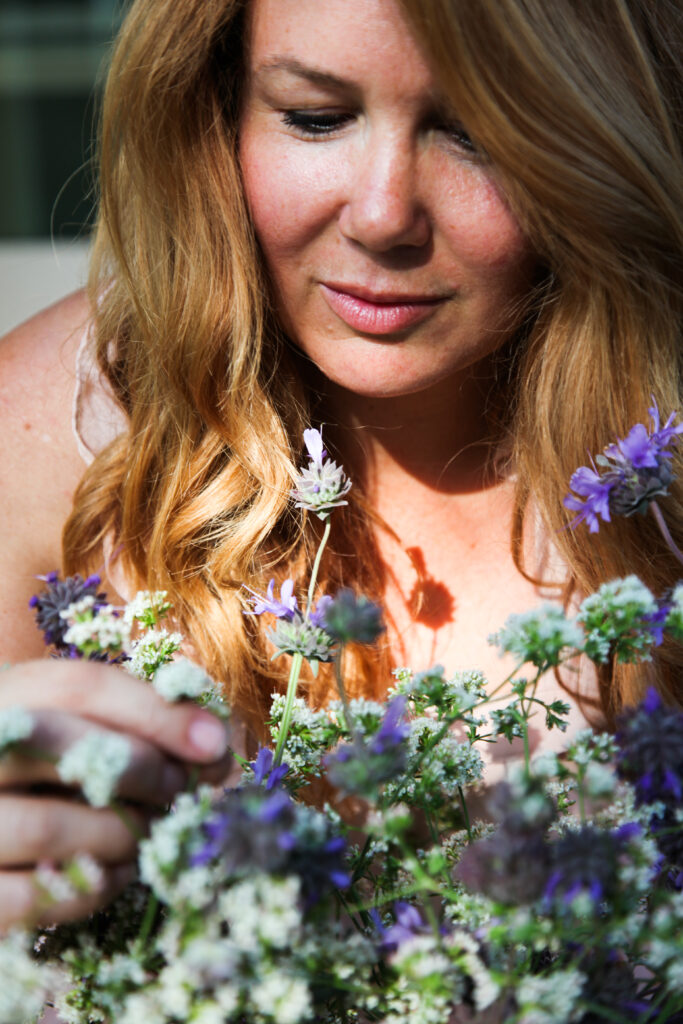
Join Us in Celebrating “Arriving Home”
We invite you to experience the beauty and wonder of “Arriving Home,” where Justina Freel’s artistry serves as a bridge connecting us with the natural world.
“Arriving Home” is on display from March 23 to July 14 in the Pritzlaff Conservation Center Gallery at Santa Barbara Botanic Garden.
 Donate
Donate